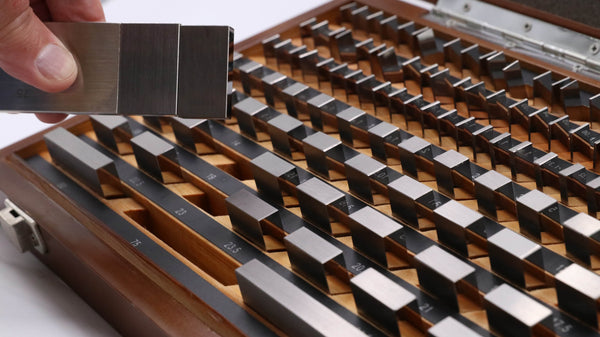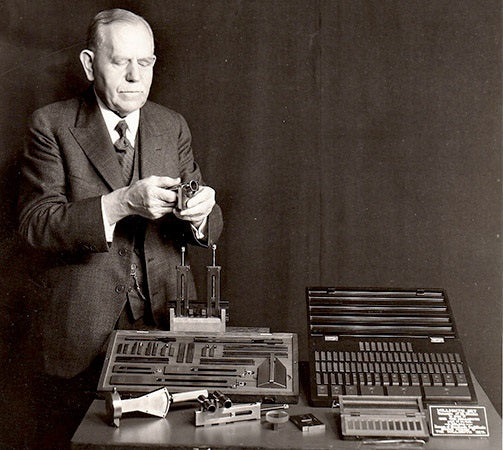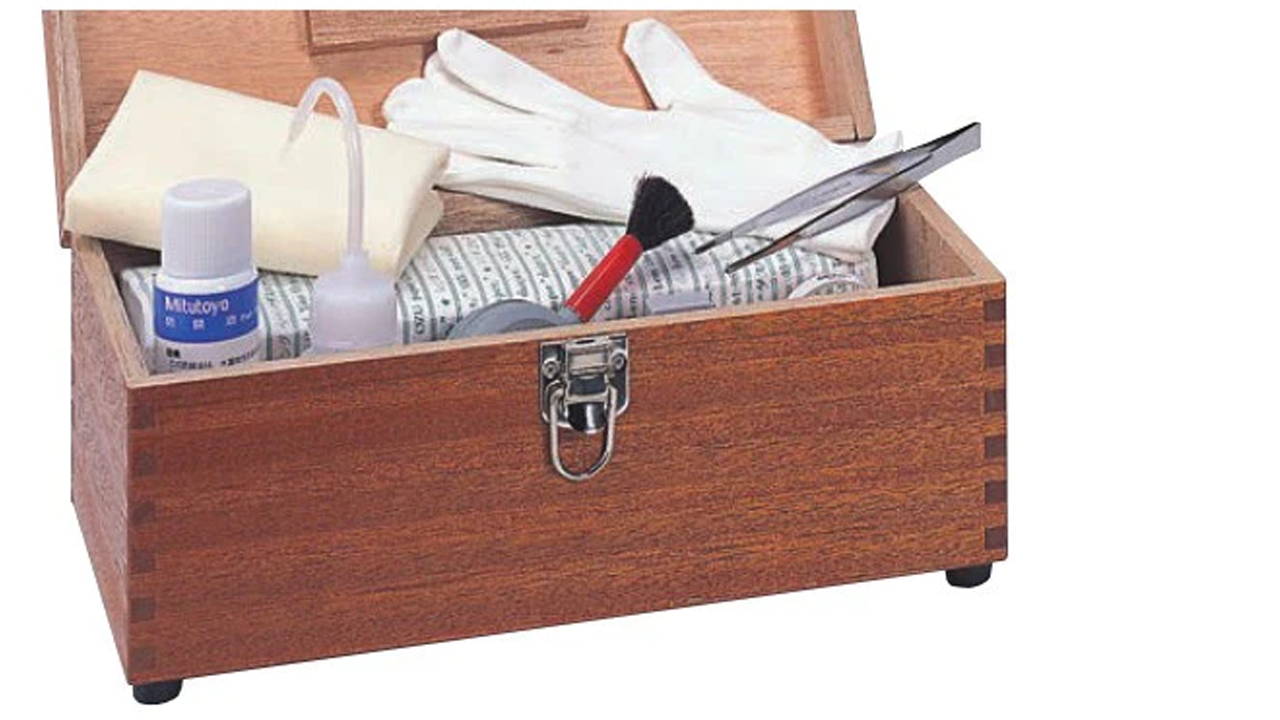
Gauge blocks, also known as gage blocks, Johansson gauges, slip gauges, or Jo blocks, constitute a precision length production system. These blocks, crafted from metal or ceramic, undergo meticulous grinding and lapping processes to achieve specific thicknesses. Packaged in sets with a variety of standard lengths, gauge blocks find application by stacking them to create desired lengths or heights.
A Brief History: The Gauge Block
Invented in 1896 by Swedish machinist Carl Edvard Johansson, gauge blocks serve as reference tools for calibrating measuring equipment in machine shops. Devices like micrometers, sine bars, calipers, and dial indicators rely on gauge blocks for accurate calibration, establishing them as the primary means of length standardization in various industries.
Prior to this era, the utilization of gauges had seen a prolonged history, witnessing a surge in applications like filing gauges and custom-crafted go/no-go gauges. These tools were individually tailored in toolrooms for specific applications on the shop floor. However, the revolutionary concept envisioned by Johansson marked a significant departure—super-precision gauge blocks that could be seamlessly wrung together to create an array of distinct lengths had never been realized before.
What Makes A Gauge Block Special?: All About Wringing

A distinctive feature of gauge blocks lies in their ability to seamlessly join with minimal dimensional uncertainty. The process, known as wringing, involves a sliding motion that causes the ultra-flat surfaces of the blocks to cling together. This unique characteristic enables a small set of gauge blocks to generate precise lengths across a broad range. For instance, using just three blocks from a set of 30, one can create any of the 1000 lengths ranging from 3.000 to 3.999 mm in 0.001 mm increments (or .3000 to .3999 inches in 0.0001 inch steps). Gauge blocks stand as an ingenious and indispensable tool, playing a pivotal role in achieving meticulous precision in the world of industrial measurements.
The wringing process comprises four sequential steps:
1. Initial Cleaning: Start by wiping a clean gauge block across an oiled pad.
2. Oil Removal: Subsequently, remove any excess oil from the gauge block by wiping it with a dry pad.
3. Cruciform Formation: Apply moderate pressure while sliding the block perpendicularly across the other block, encouraging them to form a cruciform.
4. Alignment: Conclude the process by rotating the block until it aligns inline with the other block.
This meticulous four-step wringing technique ensures a secure and precise connection between gauge blocks, emphasizing the importance of cleanliness, controlled pressure, and proper alignment.

After usage, it is customary to reapply oil or grease to the gauge blocks as a protective measure against corrosion. The capacity of a specific gauge block to successfully undergo the wringing process is termed "wringability," officially defined as "the ability of two surfaces to adhere tightly to each other in the absence of external means." Meeting the minimum conditions for wringability requires a surface finish of 1 microinch (0.025 μm) AA or better and a flatness of at least 5 μin (0.13 μm).
For a more detailed description on how to use and best practices when using gauge blocks, check out our video below:
To check out our Gage Block Collection, Click Here.
Gauge Block Accessories

To preserve the wringability of the gauge blocks, a specialized gauge block stone "Ceraston" is utilized. This stone is carefully engineered to remove nicks and burrs without causing damage to the block's surface.
For the preparation of gauge blocks for the wringing process, two distinct pads come into play. The first is an oil pad, delicately applying a thin layer of oil to the block. Following this, the dry pad takes center stage, efficiently removing any excess oil left on the block after the initial application from the oil pad.
Conclusion
In essence, gauge blocks and their maintenance are indispensable elements in the pursuit of accuracy in measurements. As we continue to delve into the intricacies of these precision tools, we appreciate their role in shaping the standards of precision in the industrial landscape. For more insights and detailed instructions, explore our video and discover the vast collection of gauge blocks at GreatGages.com. Elevate your measurement accuracy with the knowledge and tools that have stood the test of time in the world of industrial metrology.
To check out our Gage Block Accessories, Click Here.
